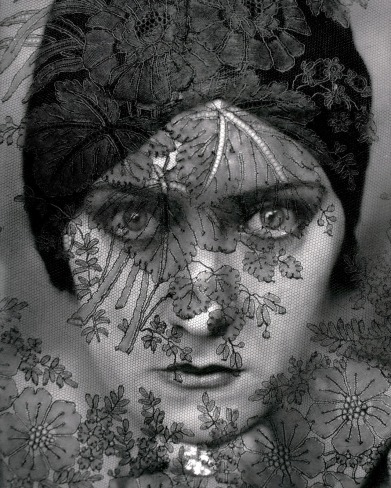As promised: This week I’m going to start (and stick with!) a more regular blogging schedule. My intention is to split my time between sharing the pieces I love and exploring the areas with which I’m less familiar. I went back and forth for several days trying to pick a piece for my first art post, but finally, it hit me! What better place to start than the piece that started it all, right?
I think everyone interested in the arts has at least one piece that has changed her perspective, inspired her creative viewpoint, and ultimately given her passion/studies/career a direction. What’s most exciting/frustrating about this idea is that it’s a truly unique experience, just for you, that, in many cases, you’ll spend the rest of your career trying to validate.
For me, this piece is Edward Steichen’s celebrity portrait of silent screen starlet Gloria Swanson featured in a 1923 issue of Vanity Fair Magazine. I discovered this a little over halfway through my first year at WVU and immediately knew it would be the topic of my senior thesis. The lace, which both cloaked and highlighted the young star, fascinated me. The photograph seemed both harsh and gentle, dark and light, personal and detached. It was dichotomies like these that I spent the next three years researching.
Besides being visually stunning, this piece spoke to me for a much more personal reason. As a classic movie fan, fashion magazine junkie, and lover of all things vintage, the idea of studying this image fascinated me. Simply put, this is not a piece of fine art. By contemporary standards, this photograph is the artistic equivalent of the picture of Kim and Kanye on the cover of Vogue. It was used as a celebrity portrait to accompany an article about one of the most glamorous young stars of the time (who was going through a very public divorce). Not much has changed, right? Still, it’s important in what it says about modern art, early photography, and the culture for whom it was produced.
As I stated, I devoted my senior thesis to this photograph. Additionally every topic I researched during the remainder of my three years at WVU focused on similar ideas. My specialization is in the symbiotic relationship between art and popular culture throughout history. That is the really pretentious way of saying this; I love popular culture. Popular culture matters. It shapes our experience as humans. It gives us similarities and shared experiences. More importantly, it is the art we see every day. We see it on the stage, listen to it on the radio, or see it on the cover of a magazine. No one will refute the importance of the zillion Renaissance paintings and sculptures that fill museums around the world. They changed the art world and in many ways the global perspective. BUT… when it comes down to it, which pieces are widely known? Mona Lisa, the sculpture of David, The Last Supper. These, the pieces that have become part of our culture, are the ones that live on, explain to everyone (not just those of us in Art History 312) why the Renaissance is so monumental, and, most importantly, reach the largest audience. And in the end, isn’t that what really matters?
Art isn’t supposed to be hidden on the walls of obscure galleries. It’s meant to be shared and to be seen by as many people as possible. It’s meant to inspire us, change us, connect us, educate us, make us angry. Art is unpretentious in nature, we are the ones who label it as elite and put it on the top shelf. This is why, while many people do not see the importance of it, I will always be a passionate supporter of commercial and public art.

